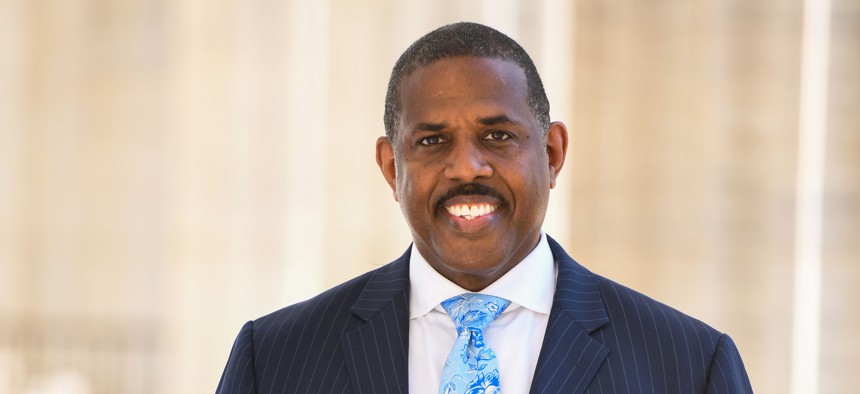If someone has ideas for how the state could better reach its goals set out in theClimate Leadership and Community Protection Act, state Sen. Kevin Parker wants to hear them. Parker, who represents the 21st District in Brooklyn, has served in the Senate for two decades and currently serves as chair of the Energy and Telecommunications Committee. He also was the lead sponsor of the Build Public Renewables Act, which empowers the New York Power Authority to develop publicly owned renewable energy and was included in a revised form in the state budget this year. This interview was edited for length and clarity.
With the Build Public Renewables Act, what are the changes from the initial iteration to what was finally passed through and how do you feel about those changes?
The main thing is that the goal I always had in mind is getting achieved. In the context of the CLCPA, I’m looking at the fact that we’re way behind as it relates to sustainable generation and the migration into a clean energy economy. So, we literally just need projects in the ground. I’ve always argued that we need to have an all-of-the-above approach. I’m agnostic to technologies, I’m agnostic to agencies that do it and in many states you have situations in which the market, the state and utilities are all producing sustainable energy. That has been my stated goal for three or four years. The goal was to figure out how to bring NYPA online and I’m very satisfied with the fact that we’re going to do a study out of NYPA and tee them up so that if and when we need them, and I think we’re going to need them unfortunately, they’ll be prepared and poised to take the steps in order to build some sustainable energy projects.
In its current state, is the state on pace to hit the goals laid out in the CLCPA?
No. I mean, right now, if you took every project that organizations like the Independent Power Producers (of New York) have and (the Alliance for Clean Energy New York), and you took the possibility under what we passed in Build Public Renewables, we still would not have enough energy in the ground in order to reach out CLCPA goals in terms of electrifying the grid. More needs to be done.
Are there any items you’re looking at for the next session?
Allowing utilities to own sustainable energy projects and then bring them back in a modified way but in some way that involves sustainable energy generation. I know in the past we’ve been regulating the market to keep them from doing it, but I think it’s going to be necessary in order for us to get to our CLCPA goals. And if somebody has a plan for us to get there without doing that, then they should share it with me because no one has shared one with me yet that shows me how we get there without utilities and the power authority, those projects.
One thing that you and Gov. Kathy Hochul were pushing for this past session were changes in greenhouse gas accounting. Are you looking at that again for the next session?
Affordability, as we do this transition into a clean energy economy, is going to be a top priority, right? We’ve had some dynamics that we weren’t expecting when we initially passed the CLCPA. For me, the issue was about affordability. It wasn’t about the accounting per se. Both me and the governor saw that in changing the accounting practice, we had an ability both to reach our goals and simultaneously create some significant affordability. We did not have enough time frankly during the budget process to educate people on how that actually worked and so there was a rejection of it. And I’m not wedded to changing the accounting; I am wedded to making sure that affordability is an important and essential part of what we do in the state as it relates to providing energy to people in our communities.
NEXT STORY: This week’s biggest Winners & Losers


